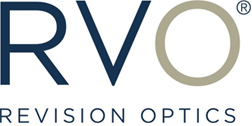As we age, our near vision begins to deteriorate, causing us to reach for reading glasses, get prescription progressive glasses, and/or contact lenses to correct our vision. These wearable solutions for presbyopia (near vision loss) can add up over the years.
Take a look at the costs associated with correcting near vision loss. There’s more to think about than just money!
Progressive Glasses
Progressive lenses contain a gradual change in prescription which corrects from near to far vision. These lenses are complex in design, which makes them costly. Patients who wear progressive lenses also need regular checkups to update or maintain their prescription.
Financial Cost:
The cost of progressive glasses depends on the type of lens (for example CR-39, polycarbonate, high definition or high index lenses) used as well as the cost of the frame. 1 Progressive lenses can sometimes cost $400 or more, and high end designer frames can be priced up to $1,000. 2
Over the course of 5 years, some people may have three changes in prescription. The cost of new lenses and upgrades to designer frames can cost up to $4,200 or more, not including the cost of copays and doctor visits.
Estimate of Costs of Progressive Glasses over 5 Years:
3 Lens Prescriptions $1200
3 Frames $3,000
Total can add up to $4,200
*costs of lenses and frames will vary, estimate not including the cost of copays and doctor visits.
Time Costs:
Trips to the eye care professional’s office to update prescription and get frames fitted.
Contacts
There are several types of contacts to help treat presbyopia including monovision and multifocal lenses. Anyone wearing contacts also knows the importance of having a backup pair of glasses to wear, just in case.
Financial Cost:
People who wear contacts to treat presbyopia also usually have a pair of reading glasses which can add to the overall costs of aging vision. The cost of glasses includes both the lenses, frame, and a case. Lenses can range in price, depending on manufacturer and type of lens. Bifocal or trifocal lenses can cost up to $200, and progressive lenses start around $400.2 Frames for reading glasses vary widely in price, with designer frames valued up to $1,000.3 Over the course of 5 years, a conservative estimate of the cost of contacts, solution and the three pairs of glasses scattered around for convenience can add up to $7,150 not including the costs of copays and appointments with your eye care professional.
Estimate of 5 Year Cost of Contacts, Solution and Glasses:
Bifocal contact lenses $2,500
Contact lens solution $750
Glasses lenses ($300 avg) $900
3 pairs of glasses frames $3,000
Total can add up to $7,150*
*costs of lenses and frames will vary, estimate not including the cost of copays and doctor visits
Time Costs:
Trips to the eye care professional’s offices to check up on vision, replace lenses, or frames, pick up contact refills and solution.
Raindrop® Near Vision Inlay
Raindrop is a small transparent disc called an inlay. In a quick, LASIK-like procedure, Raindrop is designed to help you regain your near vision without the need for reading glasses. The inlay sits below the surface of the eye, reshaping the cornea and correcting near vision loss. On average patients saw an improvement of 5 lines of near vision on an eye chart within one week of surgery, without the assistance of reading glasses.
Financial Cost:
Between $4,000 – $6,000 not including the cost of an initial consultation and checkups.
Time Costs:
Between the consultation and post procedure appointments, you will have 7 trips to your eye care professional in the first year. Annual checkups are recommended thereafter.
Is Raindrop Right For You?
Raindrop is recommended for patients between the ages of 41-65. By reshaping the cornea, Raindrop Near Vision Inlay improves near vision and reduces or eliminates the need for reading glasses or contact lenses. Compared to the wearable vision correction options, Raindrop pays for itself in 5 years! If you are looking to save money (and time) on your vision, make an appointment with a Raindrop specialist in your area to see if you are a candidate.
1. https://www.consumerreports.org/eyeglass-stores/how-to-get-the-best-eyeglass-lenses/
2. https://www.nytimes.com/2011/04/02/health/02patient.html
3. https://www.allaboutvision.com/contacts/faq/contact-cost.htm

